
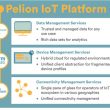
ARM, the British chip designer acquired by Softbank in September 2016 for $32 billion, recently acquired Stream Technologies for an undisclosed sum. Stream is a mobile virtual network, based in Glasgow, UK, that provides companies with a build once, deploy anywhere supply chain where any IoT device can be deployed, find a network, self-authenticate, automatically provision and connect to the lowest cost channel.
ARM is the industry’s leading supplier of microprocessor technology and the company’s marketing focuses on having its processor designs used in the expected hundreds of billions of future IoT devices. In order to realise that objective ARM was created and continuously developed Mbed technology as a way to support device creation and deployment. And in Q3 the company announced a new “device-to-data” IoT platform, known as ARM Pelion.
ARM acquired Stream in order to address connectivity management. Stream provides wireless connectivity across cellular, satellite, and low-power wide area networks. This enabled ARM Pelion to combine its own device management service, known as Mbed Cloud, with the connectivity management functionality of Stream Technologies. This combination provides a single pane of glass visibility of connectivity and device management across all devices regardless of location or network type. It gives organizations an end-to-end IoT platform for managing, connecting, provisioning and updating devices that is flexible and scalable.
This development was subsequently followed by the acquisition of Treasure Data, a company that marketed a cloud-based data management platform which enterprises use to unify data from different sources and provide a single, actionable view. Data management is needed to address the growing issues around IoT data volume, velocity and variety. Adding this capability to the Pelion IoT Platform will enable organizations to quickly, securely and sustainably create actionable insights from IoT, enterprise and third-party data.
October 19, 2018
Posted by: IoT global network
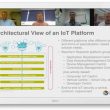
If you missed the webinar don’t worry!
Catch up with our highlights below and register here to stream the live recording.
Participants: IoT Now, IoT M2M Council, ARM, Beecham Research
Highlights
The Webinar started with two on-line polls of the areas of interest and the challenges of the participants. The first was the role of IoT in the organisation: user, OEM, application developer, solutions vendor, or systems integrator / consultant. About 50% were solution vendors and 50% users of various types, including consultants. This is more or less as expected. The second was the challenges: government regulation; internal conflicts, difficult to establish the right businesses model; lack of funding / skills; interoperability and standards. The business model was seen as the primary challenge, with interoperability also a significant challenge.
The on-line polls were followed by an introduction to IoT platforms and their use in the marketplace. Topics covered included the four key components: the application development layer plus the data, device and connectivity management layers, which are becoming increasingly complex. This was followed by an architectural view of the platform, i.e. the four main components, plus three additional categories – consumer centric, vertical-centric, such as Smart City platforms, and developer centric, plus end-to-end security which affects all categories.
This was followed by a graph showing the accelerating growth in the number of platforms in recent years. It is not slowing down: over 400 in 2016; 450 in 2017; over 500 right now and counting. Consolidation is taking place, but not a lot. Big companies are acquiring smaller companies in order to add more functionality. The wide choice will continue for the foreseeable future, hence the need for a way of helping users match their IoT requirements with the relevant platform or platforms.
That is something Beecham Research and IoT Global Network have been working on and now there is an online platform-matching tool known as IoT Pilot. It is free for adopters and has been designed to help enterprises evaluate and navigate the IoT platform landscape. This tool is not intended to generate a final selection; the aim is to provide an objective short list of candidate platforms.
Usage of the tool starts by entering responses to key questions. IoT Pilot employs the resulting search data to match the user‘s needs with a database of IoT platforms and create a short list that is available online straightaway. The same data is also summarised and analysed by Beecham Research to highlight emerging trends in the market place as well as key user requirements and concerns.
The short list identifies the name of the platform and the vendor, the category, plus a “heat map” of the platform’s strengths and weaknesses. Heat maps are a visual representation of capability of the various components of the platform: they are the results of analysis conducted by Beecham Research. In addition, there is a button on some of the individual platform pages that users can employ to auto-generate an email containing their selection criteria, to start a discussion with selected vendors.
Once users have a short list of platforms to look at – what next? Ideally they will want to approach some vendors with a list of questions to answer, so they can make a final selection and move towards implementing their chosen IoT solution. This is where work on an IoT software RFP, fronted by the IMC and on which Beecham Research also worked, comes into focus. A template RFP covering IoT platforms was created from this work that includes nearly 100 questions to ask platform vendors in order to learn more about their capabilities. This RFP template is available from the IMC (www.iotm2mcouncil.org).
Posted by: IoT global network
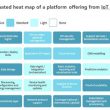
While you can do IoT without an IoT platform, it certainly aids getting an IoT solution up and running quickly and probably at lower cost than alternative approaches. Middleware is needed to enable communications between the OT (operation technology) domain where data is generated and the business IT (information technology) domain where it is used. That’s the baseline function of an IoT platform. Middleware is also employed to facilitate secure monitoring, control and analysis of device and sensor behaviour in the field. IoT platforms are therefore a key enabling product. Their functionality largely determines the performance and efficiency of IoT solutions.
Given the prognosis for the growth of IoT it is hardly surprising that a plethora of platform vendors have thrown their hat into the arena. Depending on what the term ‘IoT platform’ covers, right now there are upwards of 500 in the market in all shapes and sizes. That means the market is ultra-competitive and it is also confusing because vendors make similar, often overhyped claims for their product. In addition, it is hard to make apples versus apples comparisons since the platforms often address different requirements. A solution that employs over a hundred thousand devices will need a platform that is communications centric. One that requires integration with existing enterprise systems required will require a robust device management capability.
Those are two of five major categories that Beecham Research employs. In addition to device management and connectivity they include security, application development and data management/analytics as well as vertical market-specific platforms, such as Smart City oriented and developer-oriented. Vendors will typically focus on their area of expertise, but platform strengths have to align with solution needs: it’s a make or break issue. Therefore the requisite solution may involve a combination of different platforms covering different layers in the overall IoT stack.
Replacing confusion with clarity
Evaluating the performance of 500 platforms is clearly a difficult, time-consuming process and it becomes an even more significant issue when two or more platforms are required. Users may elect to “play safe” and go with one of the heavy hitters. However – which one? This can also result in a platform that is expensive, over-engineered and not optimised for the particular solution requirement.
Beecham Research recognised the emergence of this issue and created a comprehensive database on the various platforms as well as a matching tool known as IoT Pilot. Users enter their baseline requirements and IoT Pilot is then employed to navigate the database and give the user a list of vendors whose products match the performance criteria.
Performance parameters are analysed and presented in a structured way for all products, which facilitates comparisons. In addition, there is background information on the relevant vendors, bullet points on the key strengths and categories, together with a “heat map”. This is a 5 x 5 matrix (example above) comprising performance indicators mapped against generic platform functionality. These maps allow users to see a platform’s functionality and performance parameters and thereby obtain a holistic, memorable impression.
In a nutshell, the service replaces multiple product confusion with insightful clarity.
Posted by: IoT global network

Cloud communications platform Twilio, announced Twilio Super SIM, built on the Twilio Evolved Packet Core (EPC) and expands Twilio’s tier-one carrier relationships on the Twilio Super Network to include wireless connectivity. (more…)
October 18, 2018
Posted by: Anasia D'mello

An advanced security product for IoT devices has been unveiled at the IoT Solutions World Congress. Developed by the UK company, Crypto Quantique, it is aiming to become the foundational security product for every IoT device in the world. (more…)
October 17, 2018
Posted by: Anasia D'mello
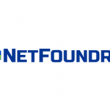
NetFoundry announced its partnership with Micron Technology, Inc. and Tata Communications to provide zero trust silicon-to-cloud secured connectivity via any (more…)
Posted by: Anasia D'mello

NetComm has launched a new self-install CAT 18 – 4G LTE Residential Gateway that will allow network operators to activate more fixed wireless customers faster and more cost-effectively. (more…)
October 16, 2018
Posted by: Anasia D'mello

Paessler AG, a network monitoring specialist, and Sigfox, a provider of connectivity for the Internet of Things (IoT), are partnering to help their customers more effectively monitor and manage their critical IT infrastructure and manifold further assets. (more…)
October 15, 2018
Posted by: Anasia D'mello
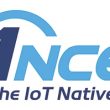
(Sponsored News) – COLOGNE, 10/2018 – 1NCE, the provider of the world’s first IoT Flat Rate (powered by Deutsche Telekom) has launched a comprehensive Partner Ecosystem to expand its reach within the international IoT market. The partner network comprises renowned IoT companies like Quectel, Codico and many others. It forms the basis for the company’s continuous growth track and enables its partners to better respond to market demands and increase their customer loyalty through constant innovation.
(more…)
Posted by: IoT global network

Security never seems to get any easier, does it? Ransomware, say the experts, shows no signs of diminishing as a threat to consumers and enterprises. So if they can’t nullify the threat, how can enterprises and consumers reduce their vulnerability? Security specialists advise Jeremy Cowan on the next steps to take.
Posted by: Anasia D'mello